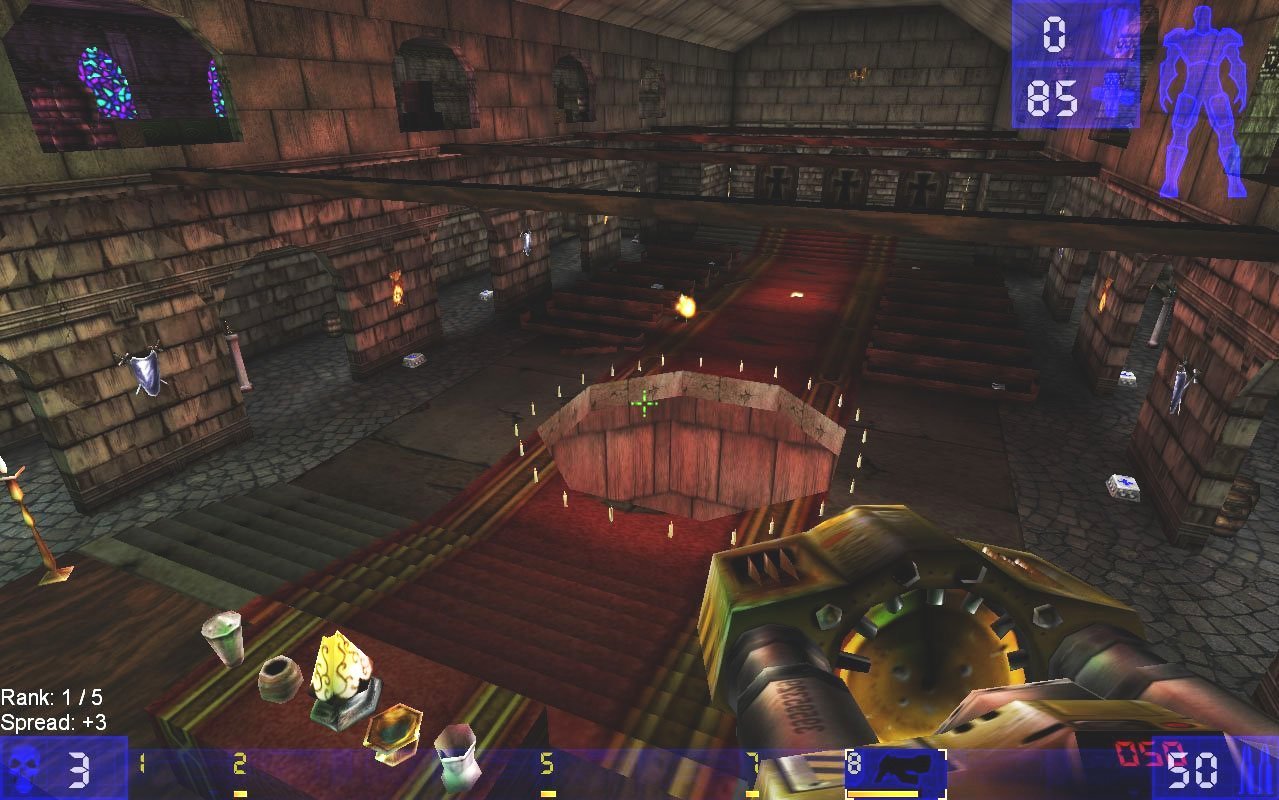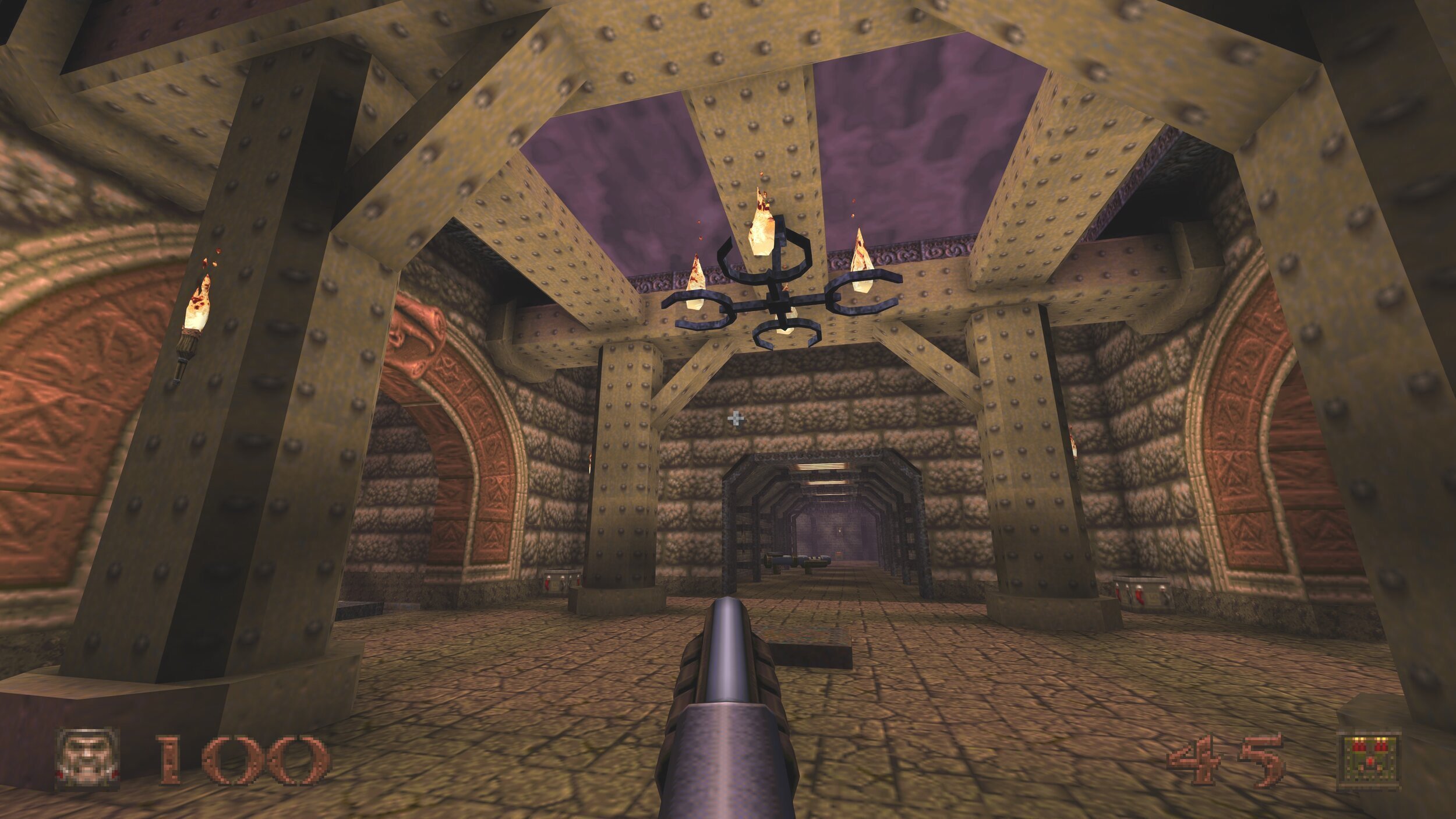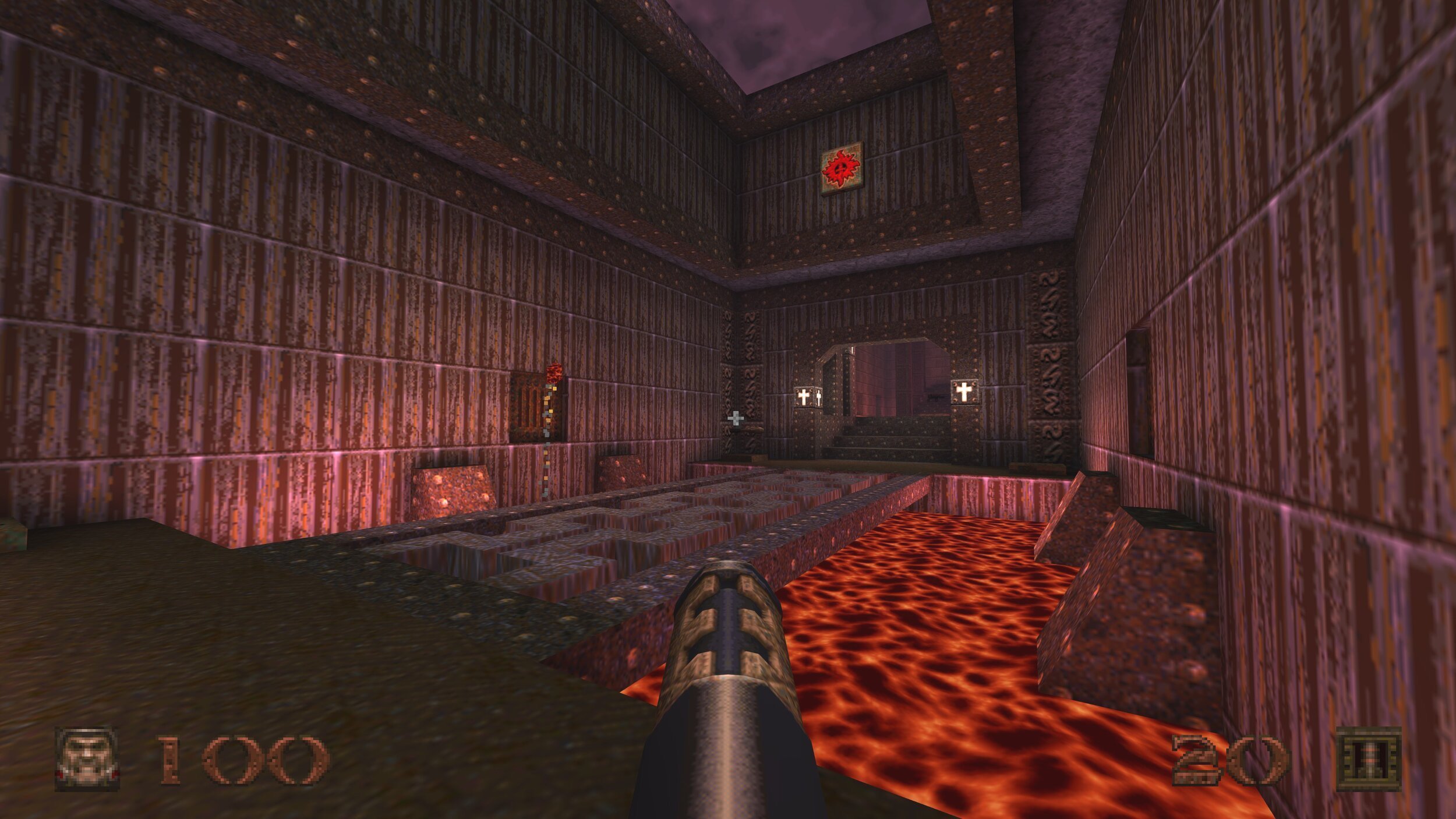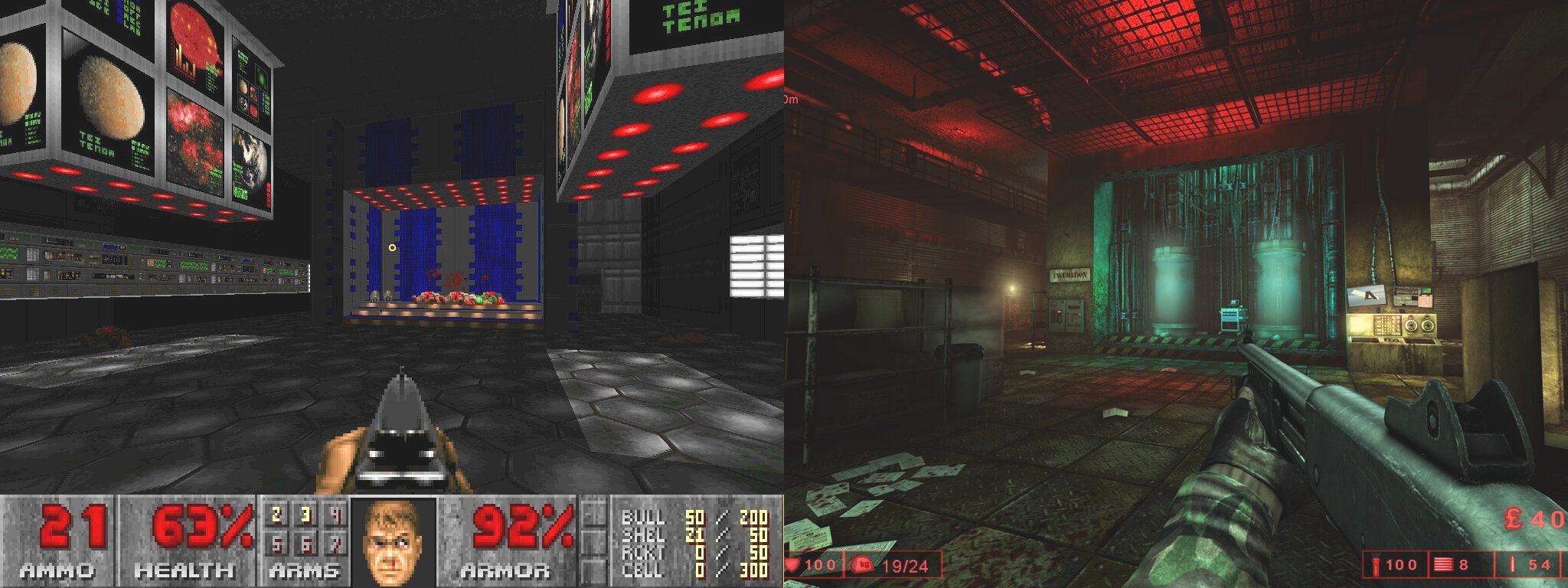Unexpected UX & UI career 16 years ago.
16 years ago, at the age of 22, I found myself deeply immersed in a world of pixels and polygons, crafting intricate levels for first-person games like Unreal and Quake. It was a time of ambition and creativity, fueled by a passion for gaming and design. But behind the scenes, my reality was far from the digital landscapes I was creating.
Living in a small, mildew-infested room in the Presidio of San Francisco, I faced the harsh challenges of financial instability. My rent was a mere $600 a month, a figure that might seem modest, but it was a mountain to me. Every dollar was a struggle. My truck, the only significant possession I had, was falling apart, gas was a luxury I could barely afford, and my bank account was a constant reminder of the precariousness of my situation.
In those days, my website was my lifeline, a digital portfolio of my art and design capabilities that I advertised on Craigslist, hoping to catch the eye of anyone needing my skills. I offered a myriad of services, anything that could possibly turn my art into sustenance. I was a jack of all trades in the digital art world, yet mastery seemed like a distant dream.
Then, in a twist of fate, the iPhone App Store was launched. It was a watershed moment for developers and designers alike, and unknowingly, it became my beacon of hope. As developers began to explore this new frontier, they reached out to me, seeing potential in the skills of a self-taught level designer. These interactions were not just business opportunities; they were lifelines, pulling me away from the brink of financial ruin.
I had no formal education in design or anything related to the digital arts. Everything I knew came from hours of self-teaching, fueled by my passion for games and design. This period of my life was defined by my relentless drive to keep my room in the Presidio, to keep creating, and to keep dreaming of a better future.
This is the story of how I transitioned from designing game levels to mastering the art of UX and UI design, a journey of resilience, adaptation, and self-discovery...
... As I navigated the complexities of level design, my knowledge was not solely built on trial and error. My journey was guided by the wisdom of experts, encapsulated in a few key books that became my bibles. These books were not just instructional; they were my mentors in print, guiding me through the intricacies of level design and game development.
"Mod Programming in Quake 3 Arena" - Quake 3 was more than just a game for me; it was a canvas for creativity. This book unlocked the secrets of modding in Quake 3, allowing me to customize and create unique gameplay experiences.
"Master Unreal Technology: The Art of Level Design" - Unreal Technology was at the forefront of game design during my early days as a designer. This book provided invaluable insights into using the Unreal Engine for crafting visually stunning and technically sound levels.
"The Hows and Whys of Level Design" - This book was a cornerstone in understanding the fundamental principles of level design. It offered a deep dive into the art and science of creating engaging and immersive game levels.
These books were my companions during the late nights and early mornings spent in front of my computer screen. They were a source of inspiration and instruction, helping me transition from a teenager laying out StarCraft levels and experimenting with Duke Nukem 3D to a more refined and skilled level designer in my early 20s.
I'm excited to share with you the levels I designed during those formative years. These levels, born from countless hours of dedication and learning, were my first real steps into the public domain as a designer. I've included images and links for you to download and explore these levels. Whether you're a fellow designer, a gaming enthusiast, or just curious, I hope you find something in them that resonates with the passion and effort that went into their creation.
“Dogma”
Unreal Tournament 1999 - Multiplayer
...One of the first memorable levels I designed during this period was titled "Dogma," created for Unreal Tournament 1999. "Dogma" wasn't just a level; it was a narrative and aesthetic experiment, an exploration of what could be achieved within the boundaries of the game's engine.
The level was set inside a church from the Unreal Universe, a setting that was both familiar and surreal. At the heart of the church stood a Nali, an alien from the Unreal Universe, recognizable by its four arms. This Nali was positioned at the cross, creating a striking and somewhat eerie focal point for the level.
However, "Dogma" was more than its setting; it was a playground of colors and reflections. I wanted to push the limits of what was visually possible in a game level at that time. The church was designed with an array of reflective surfaces, playing with light and shadows to create an immersive experience. The use of pretty lights and cool mirrors wasn't just for aesthetics; it was an integral part of the gameplay experience.
Releasing "Dogma" to the public was a milestone for me. I vividly remember posting it on forums and public websites that hosted levels made by the community, eagerly asking for feedback. It was a nerve-wracking but exhilarating experience, putting my work out there for the first time, waiting to see how it would be received.
"Dogma" was more than just a level; it was a statement of my growth as a designer and a testament to the skills I had honed through years of self-taught learning and passion. It represented a convergence of art, technology, and storytelling, elements that have continued to define my work in the UX and UI field.
“CTF - Morning Due”
Unreal Tournament 2004 - Multiplayer
“CTF Morning Due” was a distinctive map I designed back in 2006 for Unreal Tournament 2004, encapsulating a fantastical micro-world theme. This map places players in a colossal planting box, navigating across massive grass leaves and towering mushrooms that serve as bases for the red and blue teams.
The creative concept behind this map was to transform a typical garden into a battleground, providing a visually engaging and strategically complex environment for capture the flag mode. The design challenges included scaling the environment for gameplay balance and optimizing visibility and pathing to enhance the competitive experience. This map was not only a project submitted at Cogswell College but also earned accolades, winning “Most Visually Impressive” and
“Most Fun” from a pool of submissions by seven designers. These awards are a testament to the map’s innovation and aesthetic appeal.
Note: Unreal Tournament 2004 is no longer available for purchase due to licensing changes. However, a free version of the game can be downloaded by following instructions found here: UT2004
“REIGN”
Quake 1 Remaster - Multiplayer
I revisited and revamped a map I originally created for the classic Quake. This redesign was specifically tailored for the Quake Remaster on PC, requiring adjustments in bot pathing and material layouts to ensure compatibility.
This particular map holds a special place in my portfolio, featured in a sub-project titled "Enemy Spawn." I ventured beyond level design to reimagine the UX and UI flow for Steam, a popular PC game store. The project showcases a redesigned physical server, offering a tangible and interactive experience, a departure from the usual digital-only format.
UT3 - “Last Ditch Effort”
Unreal Tournament 3 - Multiplayer
In my continuous exploration of level design, I created "Last Ditch Effort" for Unreal Tournament 3. This level, set on an island with a large, abandoned church, offered a familiar yet unique multiplayer experience.
Building "Last Ditch Effort" was a reflection of my growing frustrations with the complexities of level design at the time. The Unreal Engine had evolved, and producing a level was no longer a solo endeavor. It typically required a team comprising a level blueprint designer, a texture artist for material surfaces, and a 3D modeler. As I expanded my skills across these areas, the challenge intensified, pushing my capabilities to their limits.
Interestingly, Unreal Tournament 3 has since been removed from Steam, making "Last Ditch Effort" a part of a bygone era of gaming. This level not only represents a piece of personal history but also a snapshot of the evolving landscape of game development.
KF-DOOMed v1.3 (White Listed)
Killer Floor - Multiplayer Map
In 2008, I entered the "Grind House Mapping Contest" for "Killing Floor," inspired to bring a classic "Doom" feel to this modern FPS. My map, "KF-DOOMed," was a tribute to "Doom's" iconic E1M1 level, reimagined for the cooperative, wave-based gameplay of "Killing Floor."
Creating "KF-DOOMed" was a challenging yet rewarding endeavor. It involved 132 hours of adapting and optimizing the layout to meld the solitary exploration of "Doom" with the dynamic combat of "Killing Floor." This effort paid off, earning a top twenty placement in the contest and attracting thousands of players on the Steam Workshop.
Reflecting on this project, I'm very happy by its reception within the "Killing Floor" community. "KF-DOOMed" stands as a testament to the timeless appeal of classic FPS design, seamlessly integrated into a modern gaming framework.
After the success of “KF-DOOMed,” I was motivated to showcase this and other diverse projects on my personal website. This digital portfolio became a canvas for my creative explorations, ranging from early iPhone games to intricate 3D models and animations. I remember meticulously curating each section, ensuring that visitors could witness the breadth of my capabilities.
In this vibrant online space, “KF-DOOMed” took a prominent place among a colorful mosaic of projects. Each project was a story - be it those iPhone games sourced from Craigslist collaborations or the animations that brought static models to life. These were not just projects; they were experiments in creativity and technology.
Two screenshots of the website, now just digital memories, capture the essence of that era. They show a user interface that was both functional and aesthetically pleasing, reflecting my commitment to combining form with function. Though the website’s URL has since faded into the past, these images are testament to a time of boundless creativity and the joy of bringing ideas to fruition.
Looking back at these screenshots, I am reminded of the journey - each project a stepping stone, each challenge an opportunity to grow. My website was more than just a showcase; it was a narrative of my evolution as a designer, a journey that continues to this day.
The journey took an unexpected turn with an email that popped up in my inbox. It was from a recruiter who had stumbled upon my Craigslist post and, intrigued, visited my website. To my astonishment, this wasn’t just any recruiter; he was scouting for Samsung in San Jose. They invited me for an interview, and I found myself grappling with a mix of excitement and skepticism – could this really be happening?





























